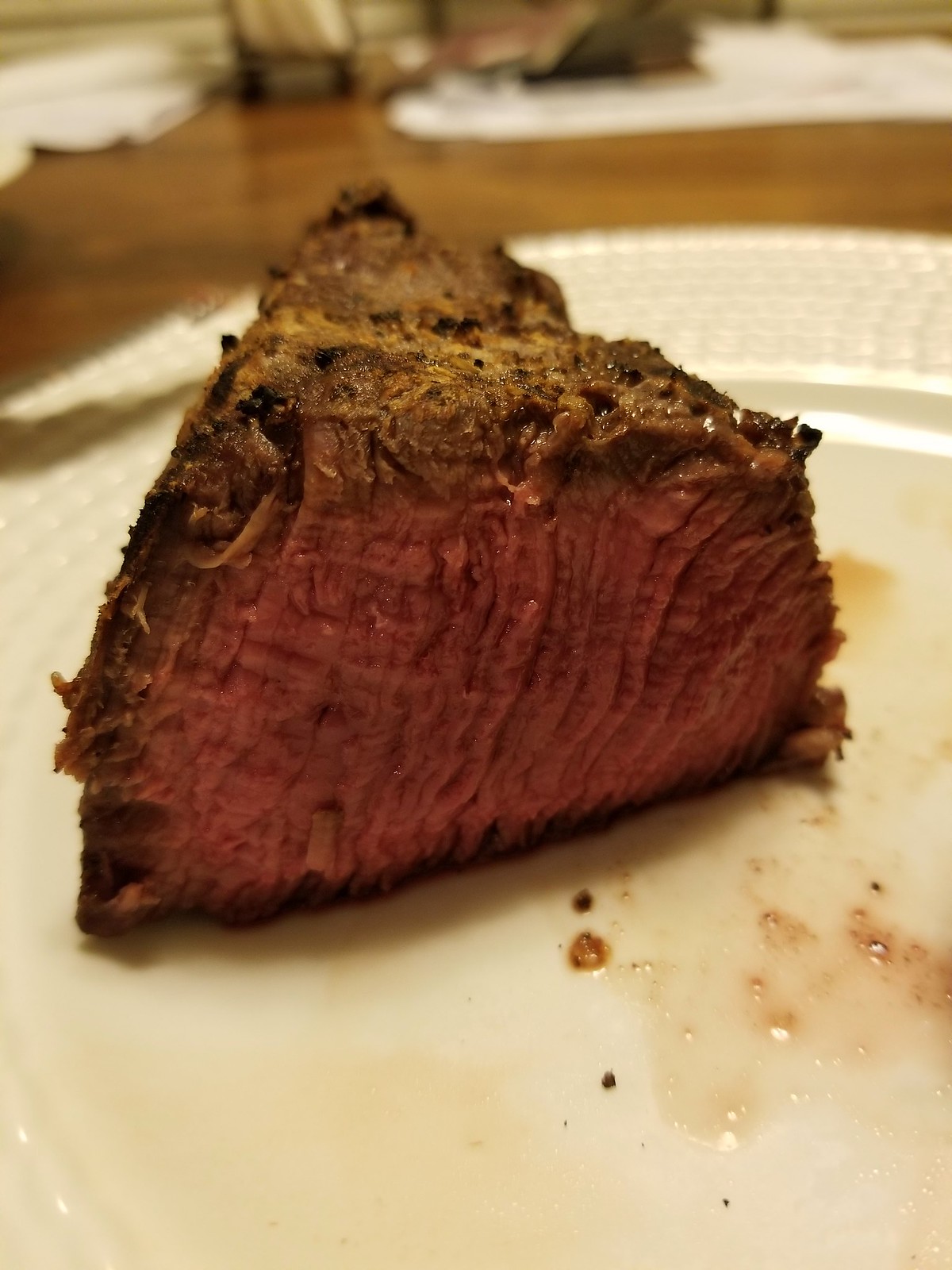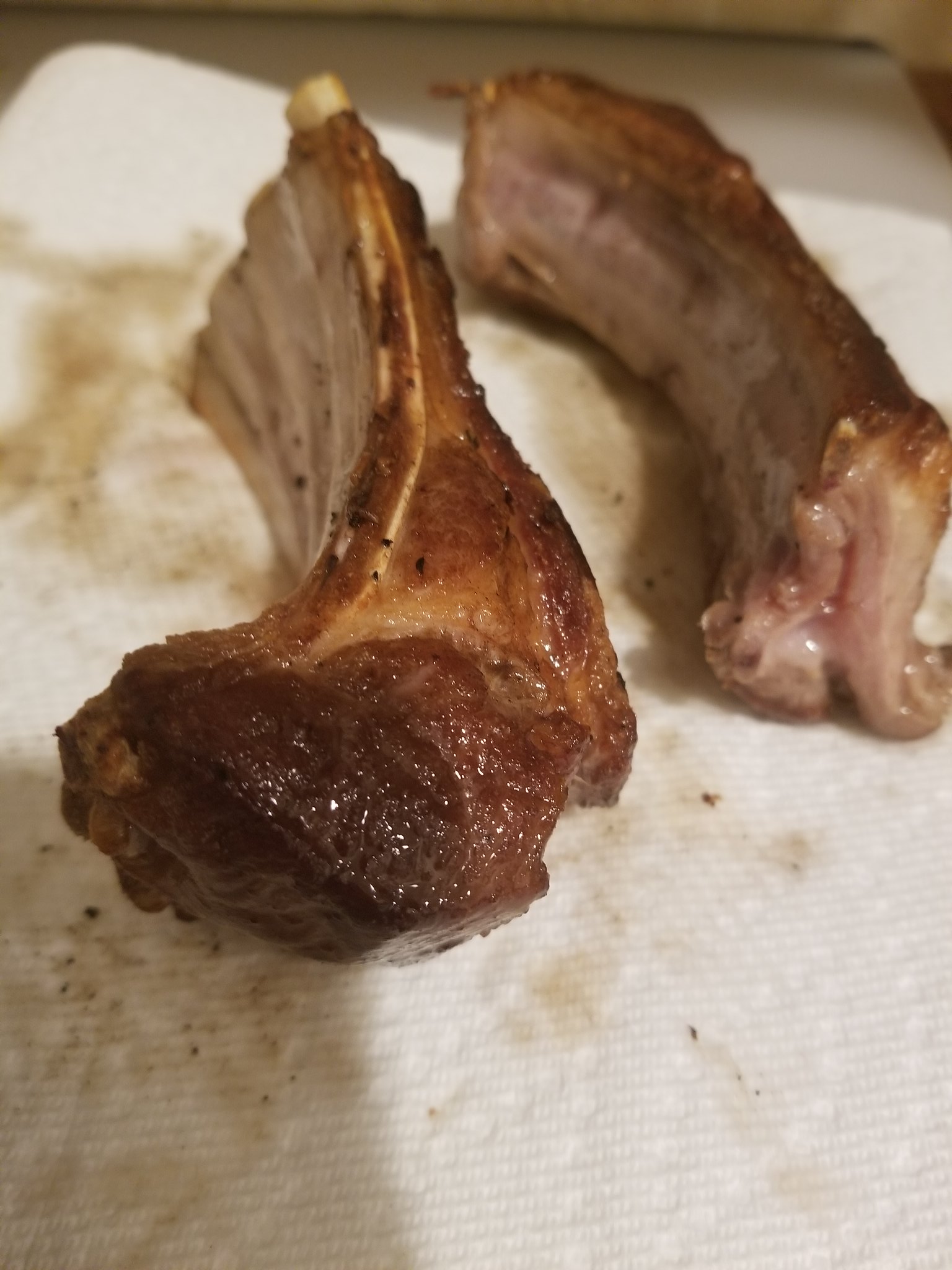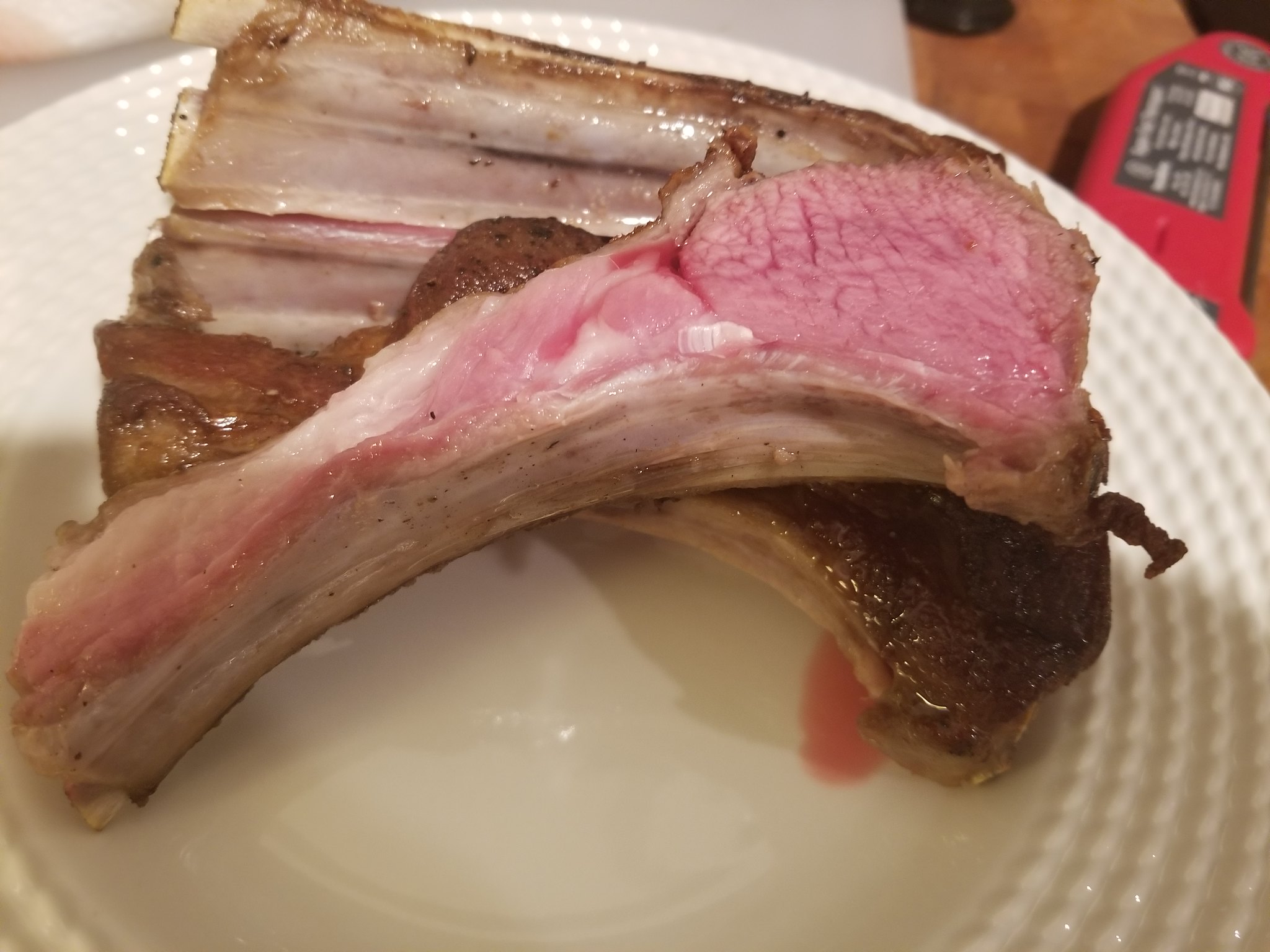
If you're going to avoid char marks, why not just cook it in an oven? I just flip once because how fast it cooks to a medium rare with that much heat, if I was cooking over lower heat I probably would flip multiple times to avoid burning the outside. Notice I didn't say the sear traps the juices, which is wrong. I guess the other side of multi-flipping that keeps me from doing it is in the fall/winter there are huge temp fluctuations from repeatedly opening the grill. Since it is usually very dry in the winter, the moist air in the grill is replaced with dry air which then allows more moisture to evaporate out of the meat; one of the reasons a lot of places have super dry bbq in the winter, but good bbq in the summer. If I wanted make a truly perfect steak, I would slow cook the steak like smoking a brisket (grill temp 230 to 250) until center hits 120-125 degrees and then sear it real quick keeping the center between 130 to 145 depending on how you like it cooked, but that takes an hour or more. I have only done that method once; if you have guest start cooking before they show up because they will not wait that long. For me I did not see a enough difference between the slow cook with end sear which is supposed to be the juiciest way versus my 6 minute stupid high heat method to make the extra time worth it. If I had a super thick cut or trying to cook past medium rare I recommend the low heat method to keep from drying the steak out. I agree, using a thermometer is important. I use to every time I cooked for 20 years, I still do if it is not my normal cut that I am use to cooking or someone request something other than medium-rare or medium and I always use one for chicken or pork.
One thing have realized is there is a lot of variables in cooking especially over a wood fire (fire temp, air temp, humidity, construct of the meat, type of cut, meat temp, wind, altitude, rub mixture ratio, rub availability) and I probably don't cook even close to exactly the same way every time as long as the finished product is as close to what people expect from me, I am good.
Once had a group of guys over, they each brought their own steak and I cooked. The critiques while cooking were brutal (I asked for trouble by letting a bunch of guys watch): You're starting the grill wrong, its too hot, that's too much seasoning, aren't you going to season the other side, that was too short of time. After eating, it was all praise.
Now french fries, there is only one correct way to cook those....



 Steak
Steak
 Mary had a little lamb
Mary had a little lamb Mary had a little lamb
Mary had a little lamb